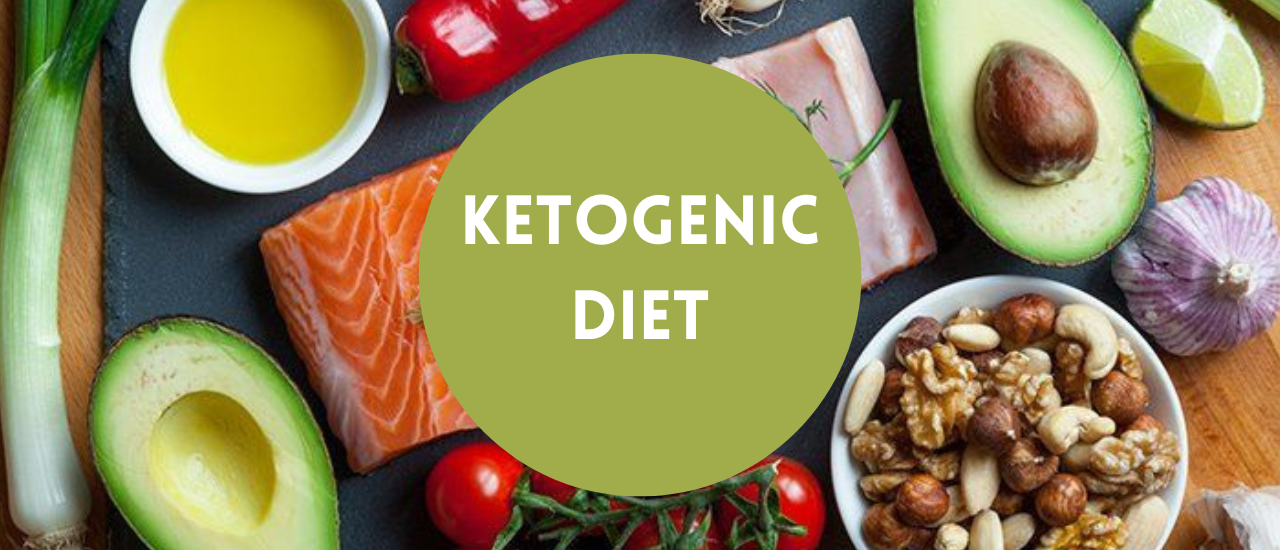


The term “ketogenic” refers to a low-carb diet. You should consume less calories from carbohydrates and more from protein and fat. The goal of the ketogenic diet is to get the body into a state of ketosis, when it must burn fat for energy instead of sugar, by drastically reducing the amount of carbs consumed to 50 grams or less per day. For energy, your body prefers to burn carbohydrates that include glucose. Your body burns fat when there isn’t any glucose from carbohydrates. Your liver transforms fat into compounds known as ketones, which are then burned in place of glucose to get energy from fat. Your body is in a state of ketosis during this procedure.
When you consume less than 50 grams of carbohydrates each day, your body eventually runs out of quick-acting fuel (blood sugar). Normally, this takes three to four days. After then, you’ll begin converting protein and fat into energy, which may cause you to lose weight. The ketosis state is this. It’s vital to remember that the ketogenic diet is a temporary eating plan that prioritizes weight loss over overall health.
On the keto diet, people frequently fail to lose weight because they have not yet entered ketosis. Not reducing carbs to a sufficient extent is the most frequent cause of failure to enter ketosis. A 2019 article on the ketogenic diet states that a person’s calorie intake from carbohydrates should be between 5 and 10%.
Numerous diets refer to themselves as keto diets. Some diets, however, might be better categorized as “keto-ish” or low-carb since they contain too many carbohydrates to consistently induce ketosis. True ketogenic diets are rich in fat, moderate in protein, and very low in carbs.
This diet is heavy in fat, moderate in protein, and very low in carbs. Typically, it has only 10% carbohydrates, 20% protein, and 70% fat. In contrast to the cyclical and specialized keto diets, the typical ketogenic diet:
The cyclical ketogenic diet is a typical keto diet with one or two days per week of clean carbohydrate consumption (between 100 and 150 grams). Basically, this diet calls for intervals of higher carb refeeds, such as five days of ketosis followed by two days of high carbs. You can use the resulting carb “cycle” to improve your workout performance. Athletes or anyone who exercises frequently is attacked by CKD.
You can increase your carb intake around exercises with this diet. A conventional ketogenic diet that takes into account nutrient timing is the targeted ketogenic diet. In contrast to the CKD, you continue to consume 5–10% of your daily calories as carbohydrates to support ketosis. It has been demonstrated that eating carbs before a workout enhances performance. Additionally, consuming carbohydrates after an exercise may speed up recuperation and increase your fitness gains.
It typically takes two to four days to reach ketosis if you consume 20 to 50 grams of carbohydrates per day. The length of time it takes to reach this state, however, varies depending on a number of circumstances. You can need a week or more to enter ketosis. Among the variables that could affect how long it takes you to reach this stage are your:
It can take you longer to enter ketosis if you previously consumed a high-carb diet than someone who consumes a low-carb diet. That’s because your body must first use up all of its glucose reserves.
The foods that are high in fat, low in carbohydrates, and moderate in protein are the greatest for the keto diet. Examples include:
Keto diet supporters promote the advantages of fat burning that is powered by ketosis as a technique to get rid of extra stored fat in the body. However, switching from glucose to fat as a fuel source might result in a number of unpleasant symptoms. The following are some examples of the symptoms of ketosis, sometimes known as “the keto flu”:
In the first three to six months, a ketogenic diet may help you lose more weight than conventional diets. This might be the case because burning fat for energy requires more calories than burning carbohydrates for energy. Another possibility is that a high-fat, high-protein diet makes you feel fuller longer, causing you to eat less.
In comparison to other diets, low-carb diets appear to help keep your blood sugar levels lower and more stable. However, your body produces substances known as ketones when it consumes fat for energy. You can become ill if your blood contains too many ketones if you have diabetes, especially type 1. Therefore, it’s crucial to consult your doctor before making any dietary modifications.
Reducing your intake of carbohydrates may be beneficial because they have been related to this skin problem. Additionally, the reduction in sugar that a ketogenic diet may cause in reducing acne outbreaks. To precisely assess how much, if any, the diet actually affects acne, further research is still required.
Ketogenic diets have been related to raising “good” cholesterol and lowering “bad” cholesterol, which appears counterintuitive for a diet that asks for more fat. It might be because these diets result in lower insulin levels, which prevent your body from producing more cholesterol. As a result, you have a lower risk of developing cardiac diseases such as heart failure, high blood pressure, and hardened arteries.
When endurance athletes workout, like cyclists and runners, a ketogenic diet may be beneficial. Over time, it improves your body’s ability to use oxygen when working hard and lowers your ratio of muscle to fat. Although it might be useful for training, it might not be as effective as other diets for achieving peak performance.
Signs Of Dust Mite Allery & What Factors Triggers To The Allergy
Know About Acne And Different Remedies To Reduce Acne Scars
Causes Of Neck Pain: Symptoms, Types & Risk Factors
Inflammation Of Ear And Reasons That Builds Up Ear Infection